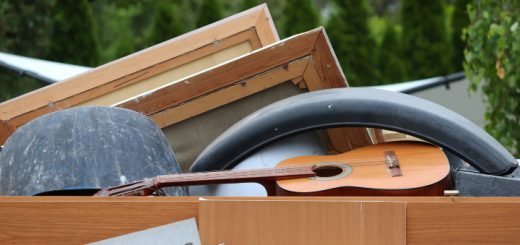The perplexing property problems caused by Japanese knotweed

In Britain, there exists an alien plant that was brought to our shores from Japan and that has gone on to cause havoc to properties all around the country. Is it some kind of bizarre internecine war we know little about, but continues to play out before the eyes of property owners everywhere? Possibly. But like many good intentions gone wrong, it all started out so innocently.
We’re talking about Japanese knotweed, a species that arrived in Britain in the 1800s as a decorative plant. Those in high society and, indeed, botanical gardens, prized the powerful perennial for its attractive, heart-shaped leaves. Back in those early days, though, they knew nothing of Japanese knotweed’s true nature. It might look pretty, but it turns out that it’s an almighty beast, and one that’s practically impossible to get rid of once it takes root in your garden.
Now we know all too well that Japanese knotweed is an almighty headache. The Environment Agency says it’s “indisputably the UK’s most aggressive, destructive and invasive plant”, and for very good reason. This is one weed no property owner ever wants to deal with, but if you find it growing on your land, immediate and proper action is required. Anything less and you risk potential damage to your property, as well as a possible dramatic fall in its value.
Japanese knotweed property attack
By this stage, you may be wondering what Japanese knotweed looks like and how you can tell it apart from other plants and weeds on your property. When it first pops up out of the ground, the shoots are red in colour and look like this. Later on, they turn green and have broad leaves and white flowers, as in these images.
It might look fairly innocuous, but it’s far from it. Left to grow, Japanese knotweed will shoot up by as much as 20cm in a day and quickly take over the entire garden. Just slashing it back to the ground won’t solve the problem, because the real issue is the heart of the plant: the wide and extensive root network that grows out in all directions. As many perplexed property owners have found, simply spraying Japanese knotweed with weed-killer or even digging out of the ground won’t kill it off. The roots will just keep sending up new shoots.
These entrenched and seemingly unstoppable rhizomes, as they’re known, will grow into cracks in a property’s walls and expand them as they grow. This can result in substantial damage to the structure of a home or commercial premises. As it searches for water to fuel its rapid growth, Japanese knotweed can also interfere with water and other piping, causing all kinds of problems and damage. It can also break through driveway asphalt and even the floors in houses. Then, there’s a whole world of legal problems Japanese knotweed can land you in.
Japanese knotweed mortgage problems
As if that wasn’t enough to be dealing with, Japanese knotweed can also lead to a severe devaluation of homes, as no-one wants them. Many people have found themselves with Japanese knotweed mortgage problems, because providers will usually not approve a new mortgage with the weed on the property. That’s unless a professional extermination firm is called in to get rid of it and provide a guarantee that the weed won’t return for as long as a decade.
It’s for these reasons that most people would not go ahead with a property purchase if they knew it had Japanese knotweed growing on it. According to the results of a survey last year, 78% of respondents would walk away from their dream property in such circumstances, because they feared not being able to get rid of the weed.
There is a solution to all these Japanese knotweed property woes, however. It comes in the form of expert Japanese knotweed removal firms. They use potent herbicides and effective dig-out methods to ensure nothing is left to start regrowing — and if it does, the best ones typically provide insurance-backed guarantees for five or 10 years.
Then, you can finally say “sayonara” to this uninvited and lingering guest from the east.
Photo credit: “Japanese Knotweed contaminated area” by Peter O’Connor is licensed under CC BY-SA 2.0









